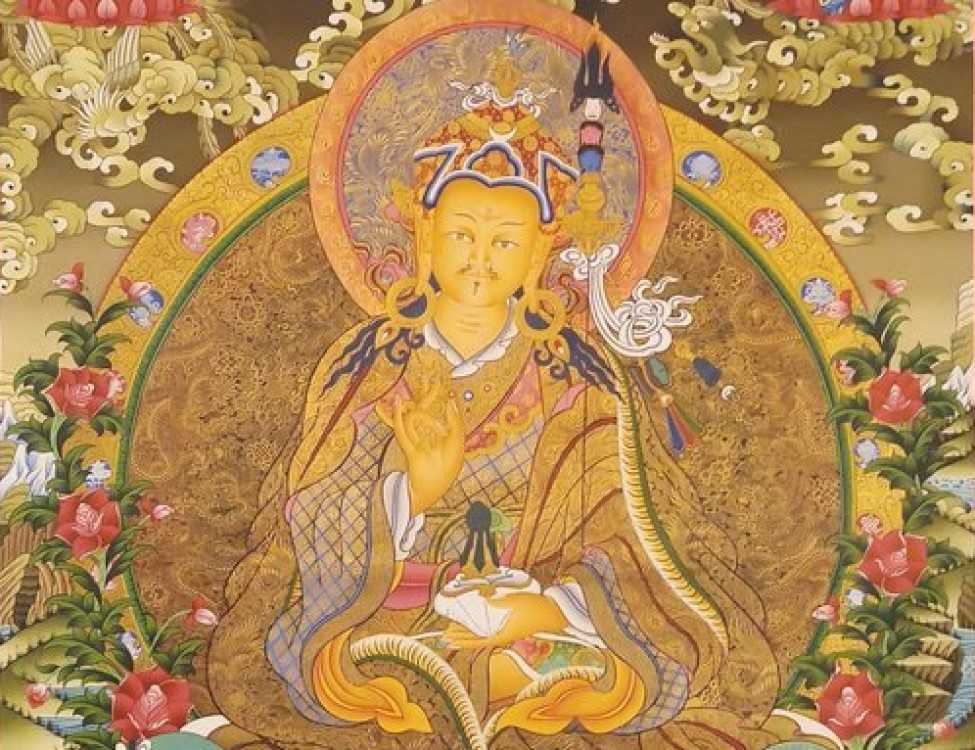The ebb and flow between the Bon Religion and Tibetan Buddhism occurred over a 400 year time period between the 7th and 11th centuries ACE. Indeed, the Bon Religion was well entrenched in Tibet for over 18,000 years before the arrival of Buddhism. As a result, Buddhism would encounter fierce resistance in Tibet from the established Bon order.
This prolonged conflict between the two religions induced political upheaval including the assassination of two Tibetan monarchs. Eventually, Tibetan Buddhism would prevail and be accepted by Tibetan culture.
However, when a new religion is introduced into a different culture, the new religion has to adapt. Tibet was no different and Buddhism was eventually adopted by Tibet albeit with Tibetan Characteristics.
Bon Religion and Tibetan Buddhism Timeline
| Tongpa Shenrab gives Bon Teachings in Zhang Zhung | 16,000 BCE |
| King Songtsen Gampo marries Buddhist Princesses | Approx. 625 ACE |
| King Trisong Detsen accepts Tantric teachings of Guru Rinpoche | 767 ACE |
| King Ralpachen murdered by Langdarma | 836 ACE |
| King Langdarma assassinated by monk | 842 ACE |
| Buddhist Renaissance in Tibet | 842 – Present Day |
Bon Teachings of Tongpa Shenrab
Tongpa Shenrab is to the Bon Religion what Shakyamuni Buddha is to Buddhism. His original Bon teachings were believed to occur over 18,000 years ago in the Zhang Zhung Kingdom in Western Tibet.
In the Bon stronghold of Western Tibet, the Bon Religion was never completely displaced by Buddhism. As a result, the Bon Religion and Tibetan Buddhism created an interesting fusion that still exists today.
This fusion of the two religions is apparent during trance ceremonies preformed by the spirit mediums working in the region. They do indeed still invoke the local spirits of the Bon Religion during their practice. However, their “trance induced invocations” now incorporate Buddhist deities, not only Bon spirits.
Buddhism First Introduced to Kingdom of Tibet
It is incorrect to assume the Indian Buddhist masters first introduced Buddhism in Tibet. Indeed, it was the marriage of the Tibetan King Songtsen Gampo in the 7th century ACE to Chinese Princess Wencheng and also a Nepali Princess which resulted in Tibet’s formal introduction.
Both of these Princesses were devout Buddhists and each brought a solid gold Buddha statue to Tibet as part of their dowry. Additionally, they zealously competed to build Buddhist temples and monuments in Tibet.
Both of these gold Buddha statues can still be seen inside of the Jokhang and Ramoche Temples located in Lhasa the capital city.
Tibetan Buddhism Established by King Trisong Detsen
The Tantric form of Tibetan Buddhism (as it exists today) was established in Tibet under King Trisong Detsen in 767 ACE. Initially, the Tibetan king was influenced by the sutra based teachings of Santaraksita. However, when constructing the first Buddhist monastery they encountered problems from “mountain spirits” impeding construction.
Santaraksita called for the assistance of Tantric master Guru Rinpoche who extricated the evil spirits. This allowed construction of the first monastery to be successfully completed. As a result, the Tibetan King felt obligated to choose the Tantric teachings of Guru Rinpoche over the sutra teachings of Santaraksita. This is how Tantric Buddhism become the national religion of Tibet.
Death and Renaissance of Tibetan Buddhism
Strong resistance to Tibetan Buddhism came to the surface in 836 ACE when the Buddhist King was strangled by his brother. As a result, Bon Religion was reestablished in Tibet under the new King Langdarma. However, his reign ended quickly as he was then assassinated in 842 ACE by a Buddhist monk. Tibetan Buddhism then returned as the religion of Tibet.
Once again Tibetan Buddhism faced an existential threat by the invasion of the Mongols in 1235 ACE. Initially, the Mongols were Buddhist adversaries and destroyed many monasteries and temples. However, they were soon influenced by the teachings of Sakya scholar Pandita Gunga Gyaltsen and converted to Tibetan Buddhism.
The strong priest-patron relationship between the Mongols and Tibetan Buddhism would extend to the rule of Kublai Khan when the Mongols controlled China under the Yuan Dynasty. However, this close relationship with the Mongols would come back to haunt Tibet after the fall of the Mongol Empire.
Indeed, the Tibetans now have to contend with the rise of Communist China in modern times. No doubt, Beijing has not forgotten about the close historical relationship between Tibet and Mongolia.

